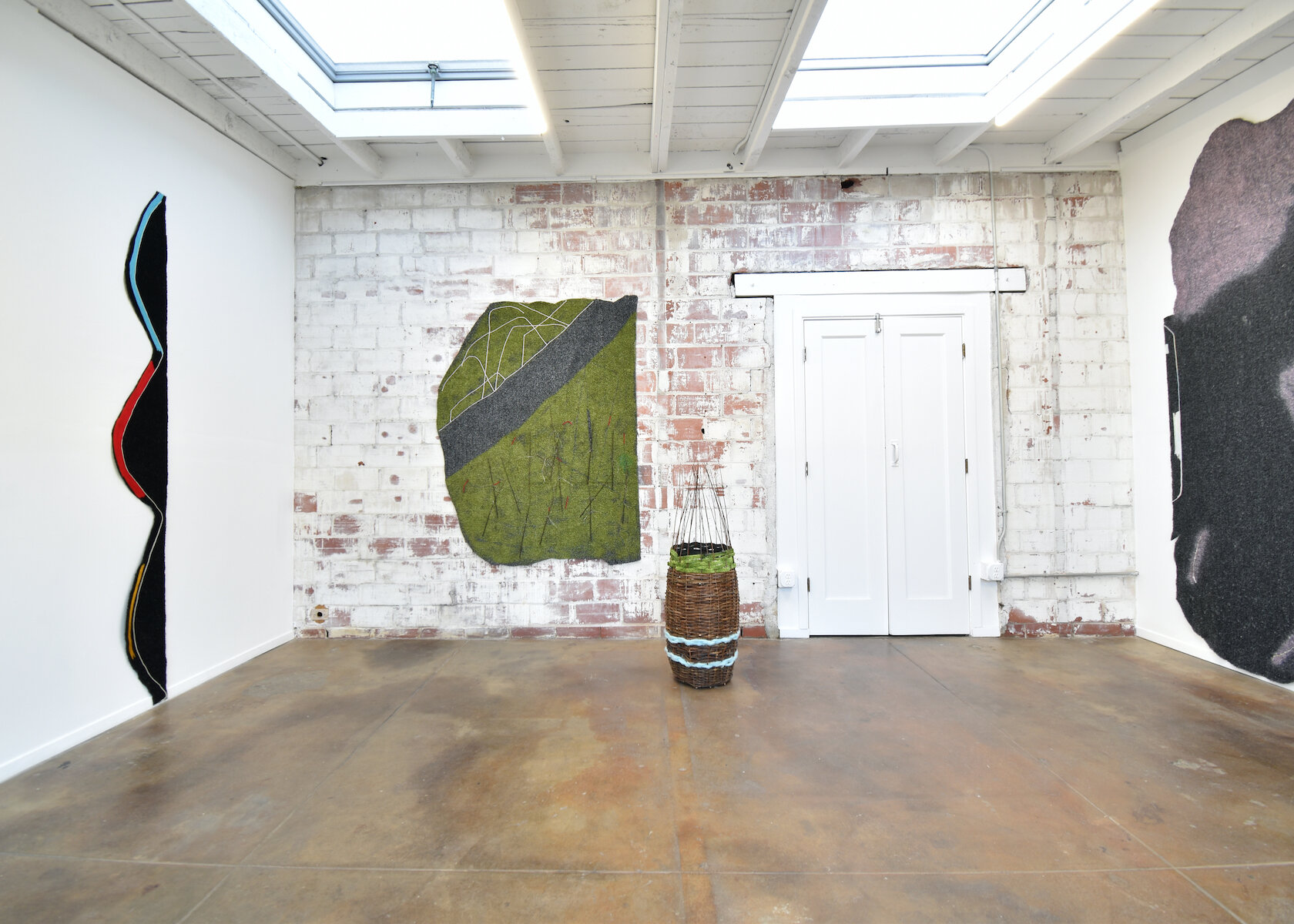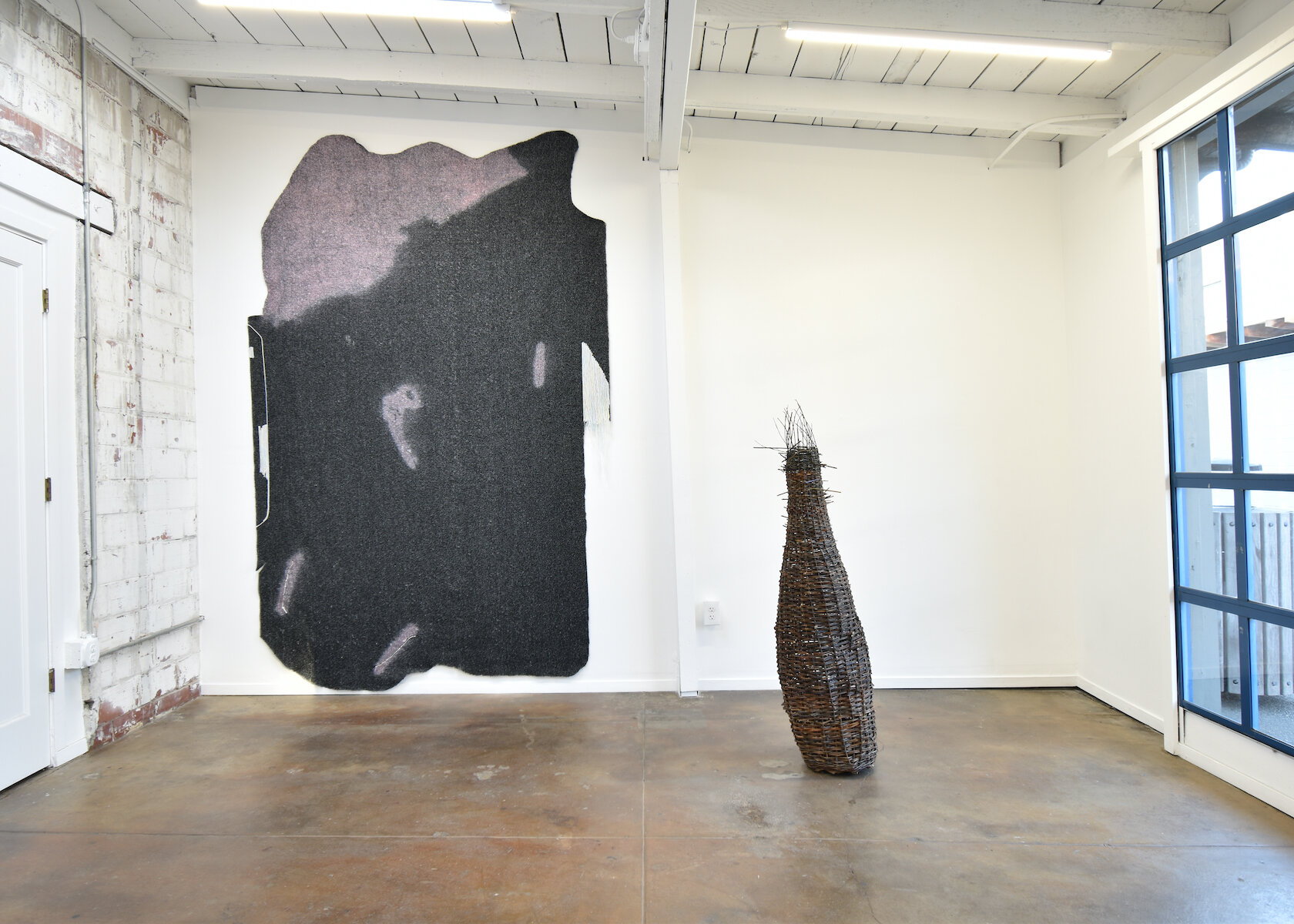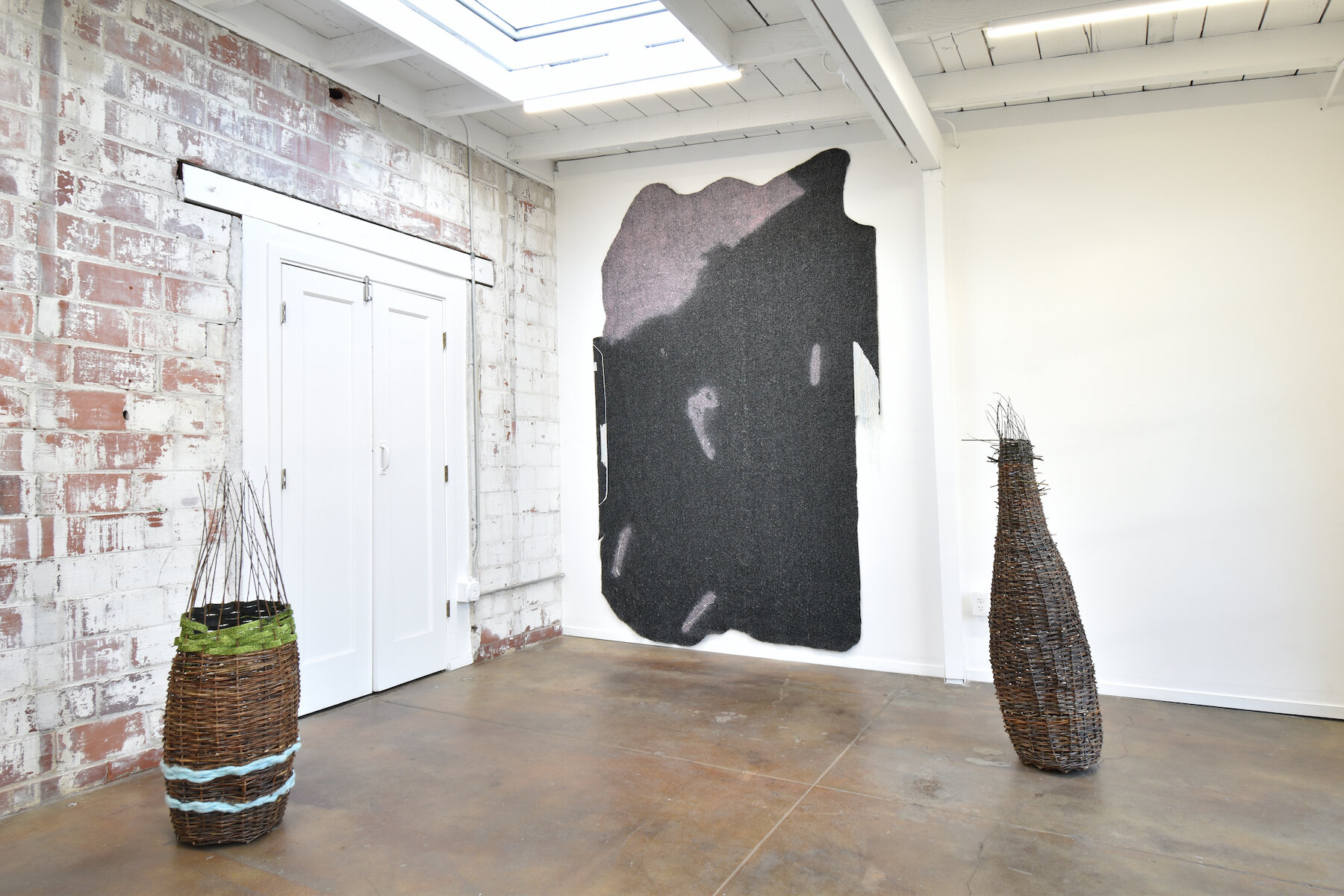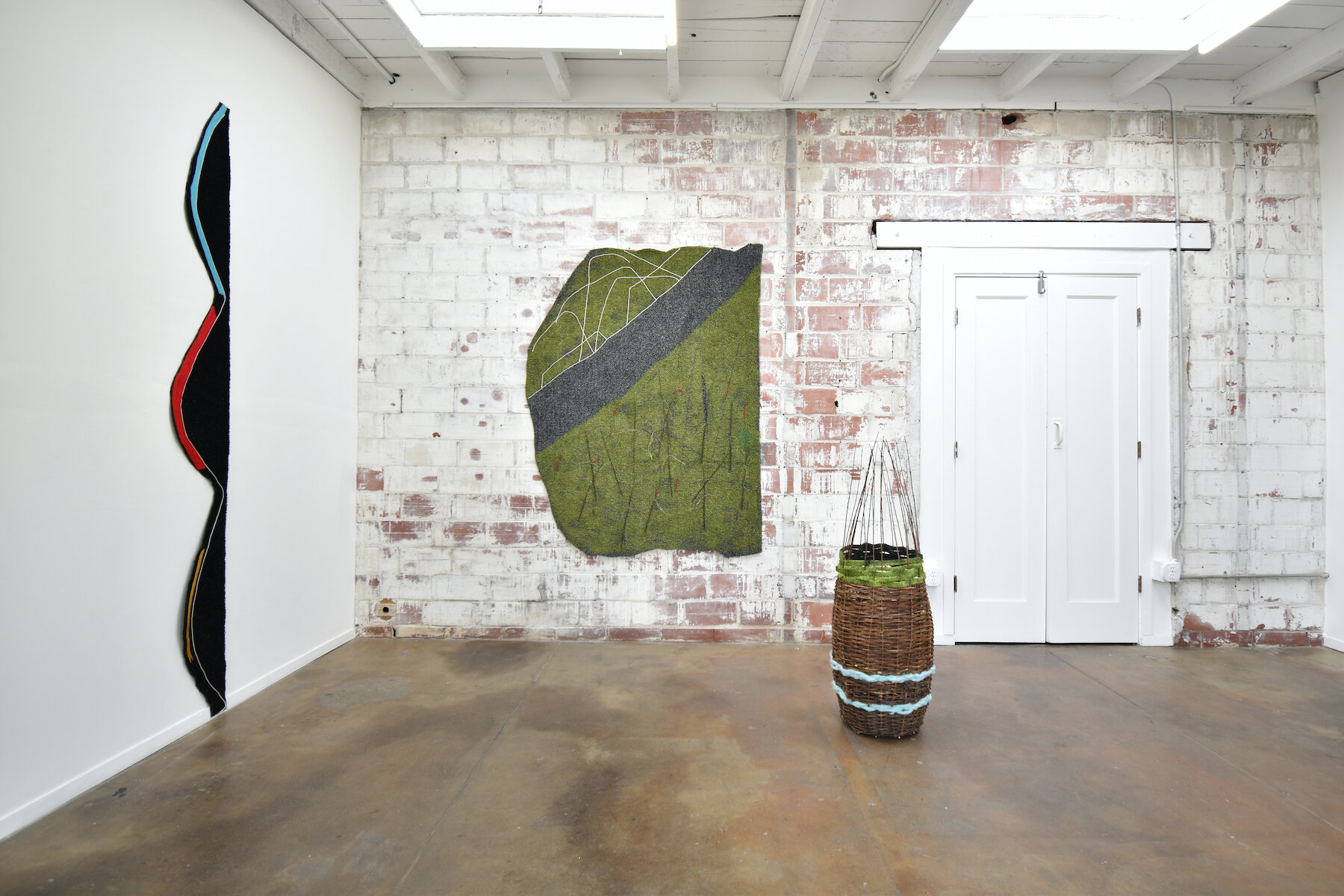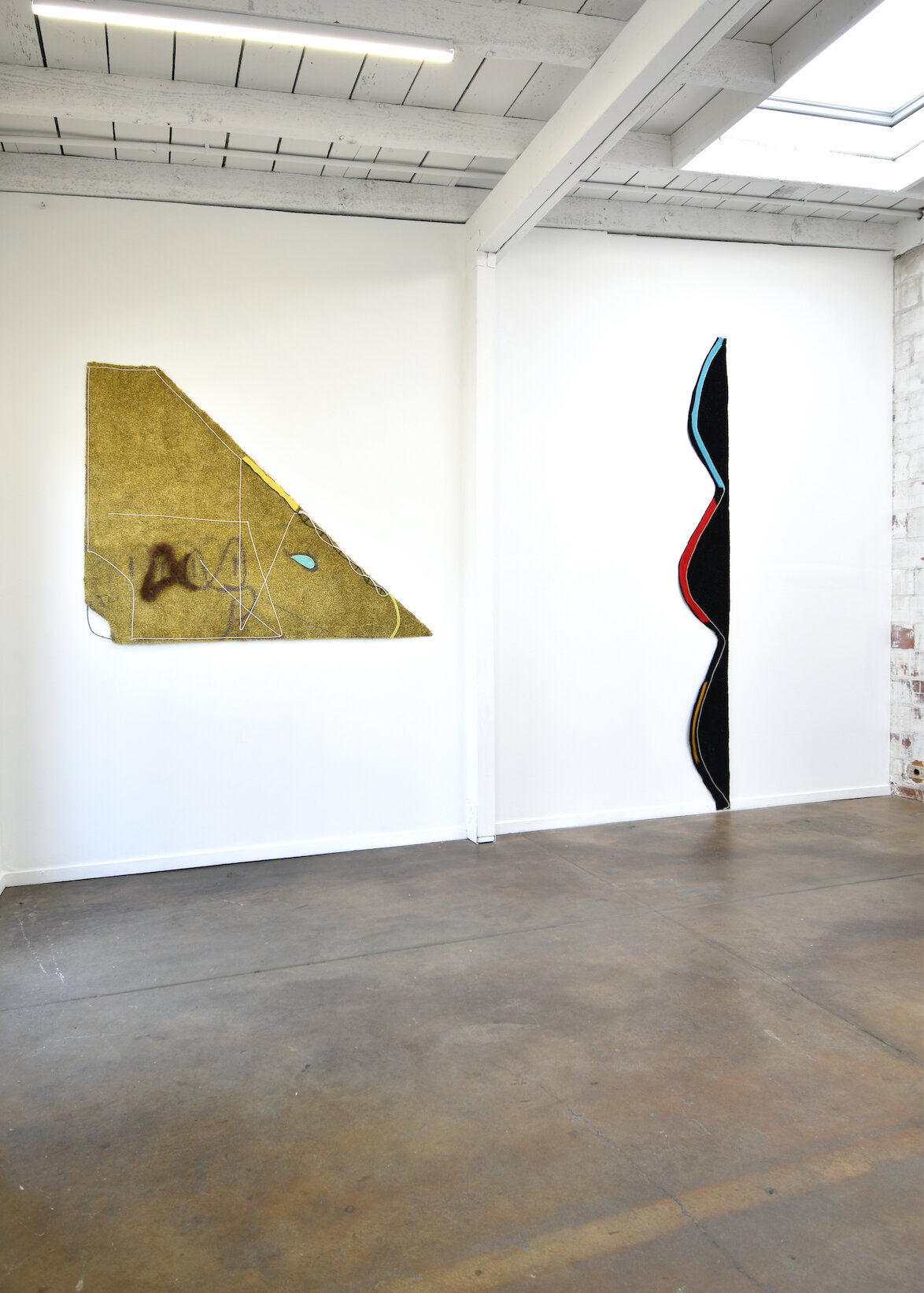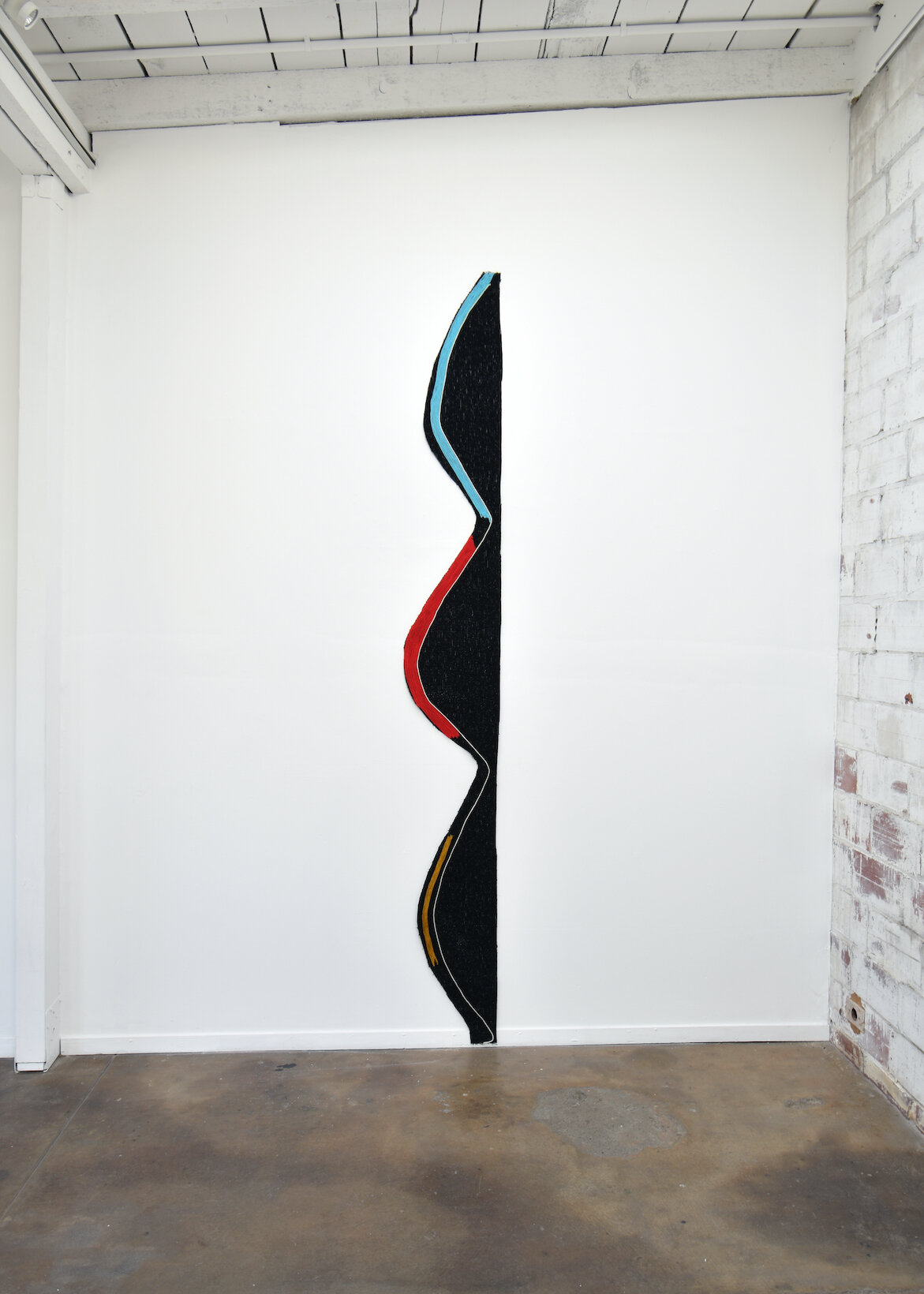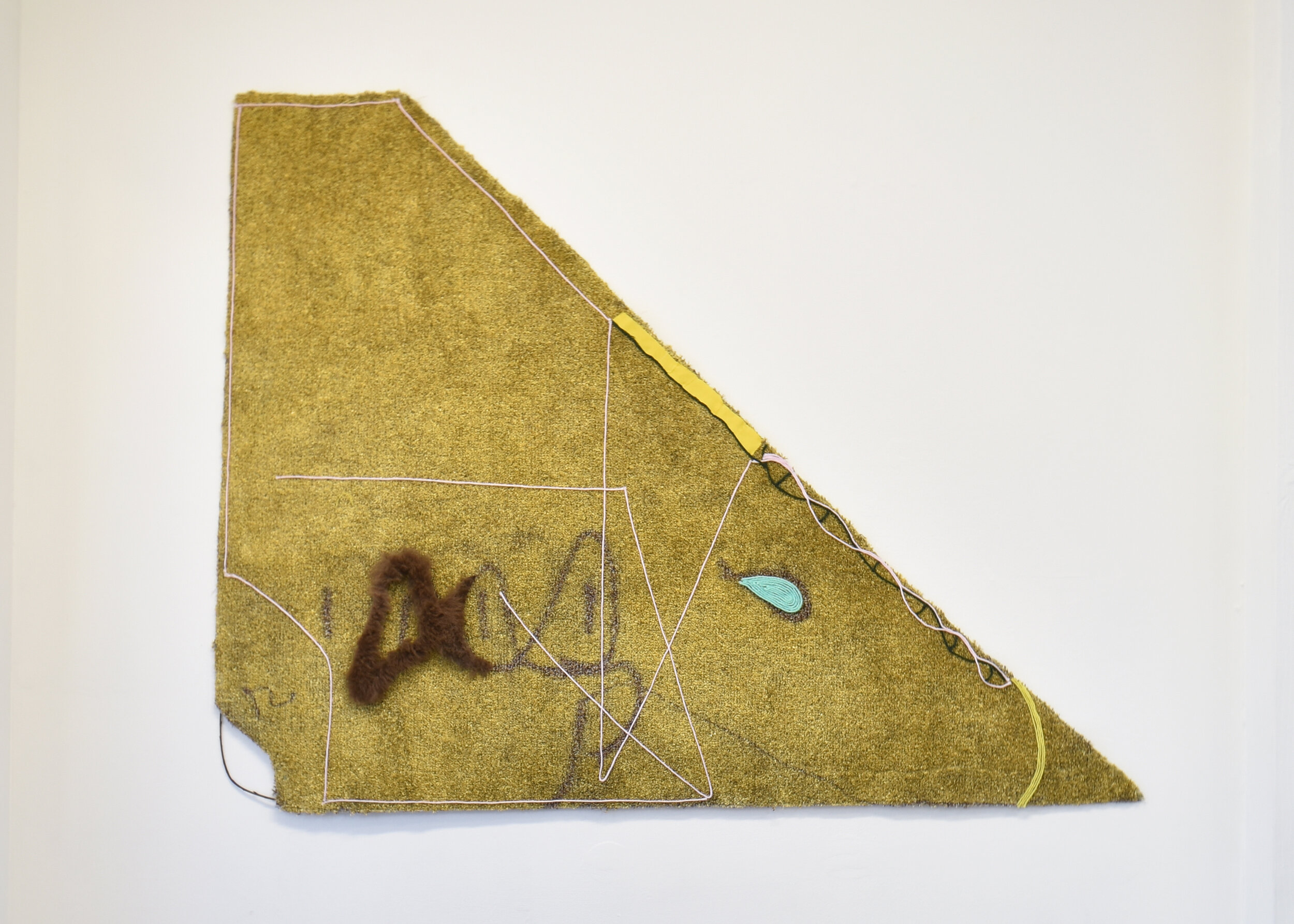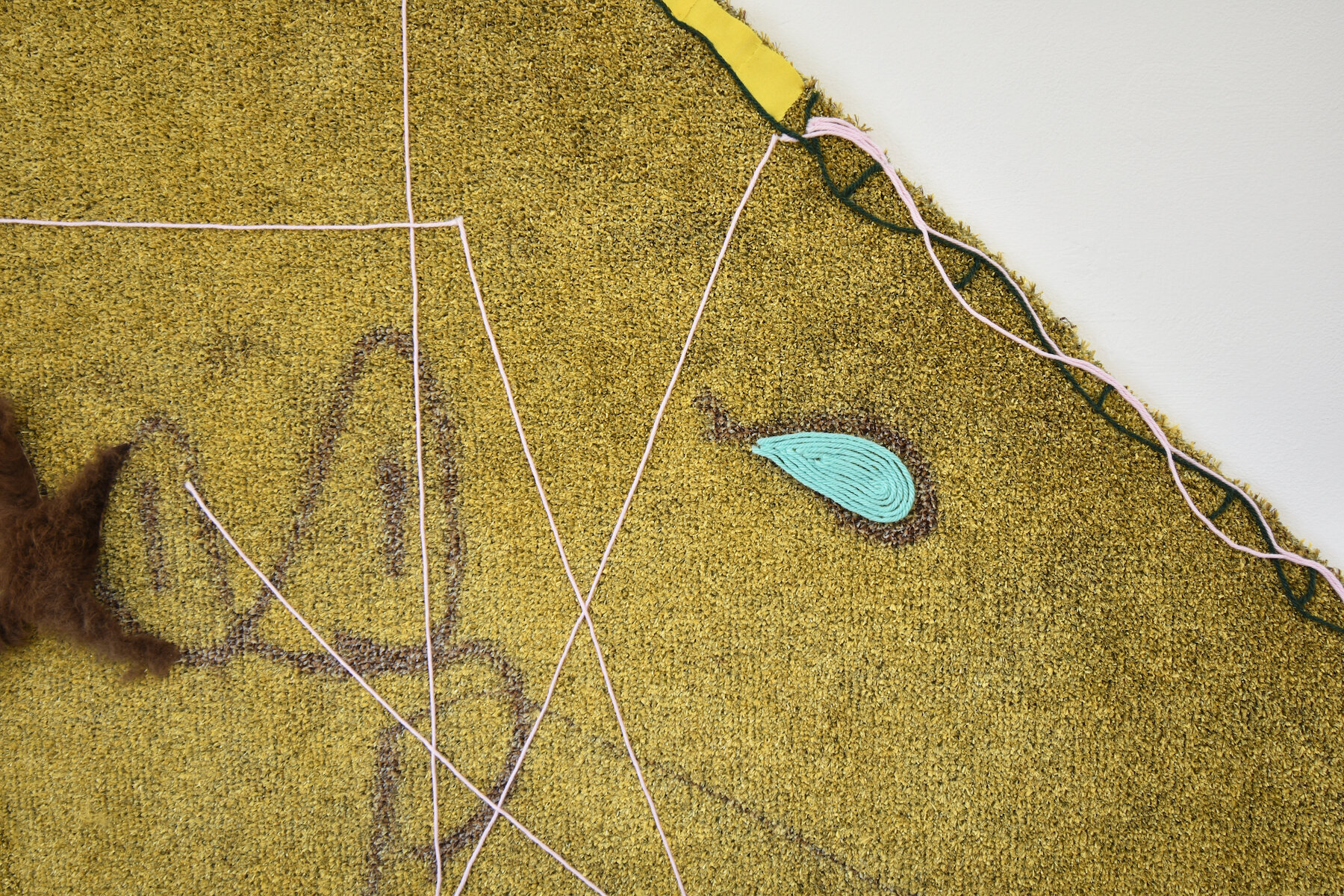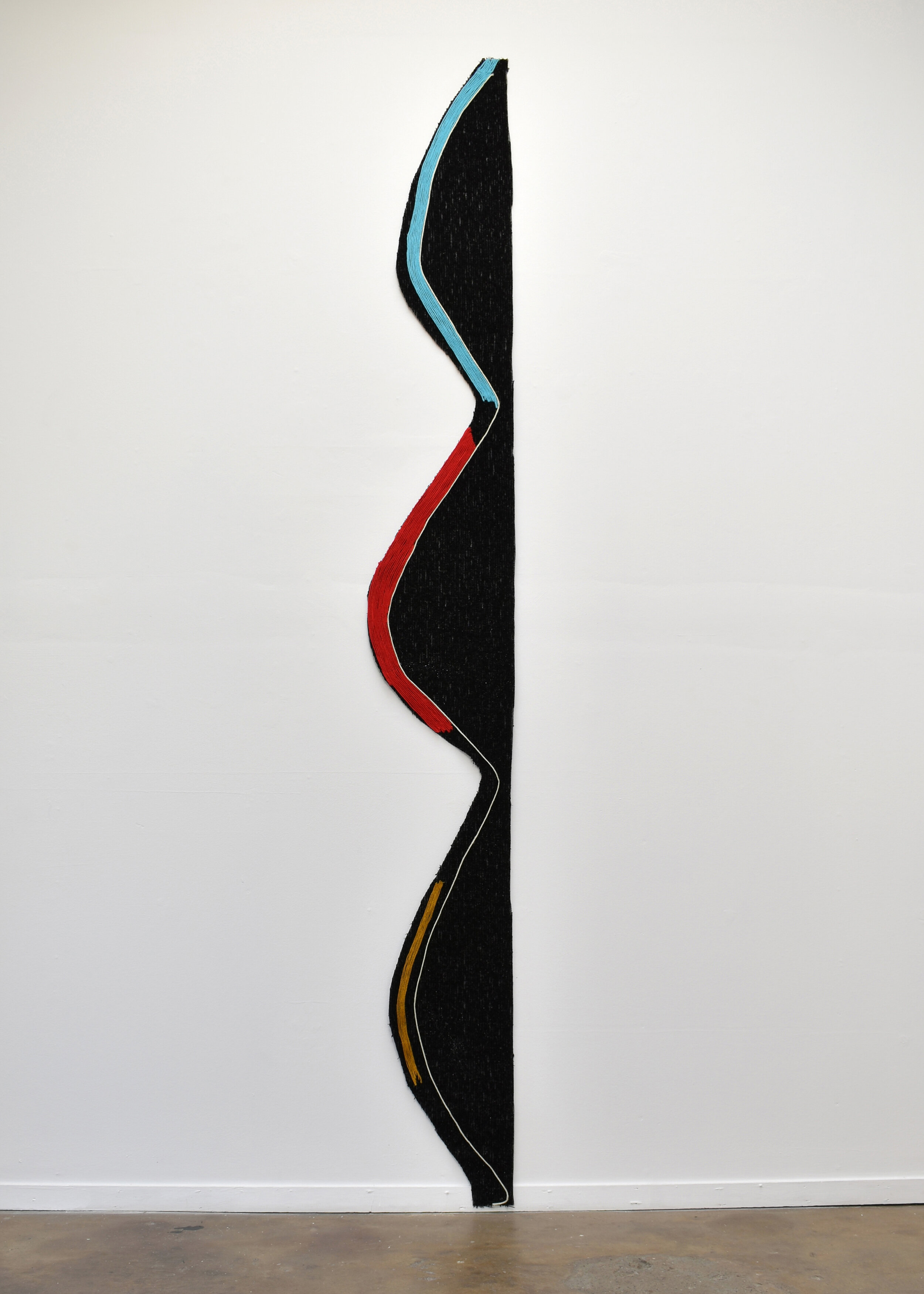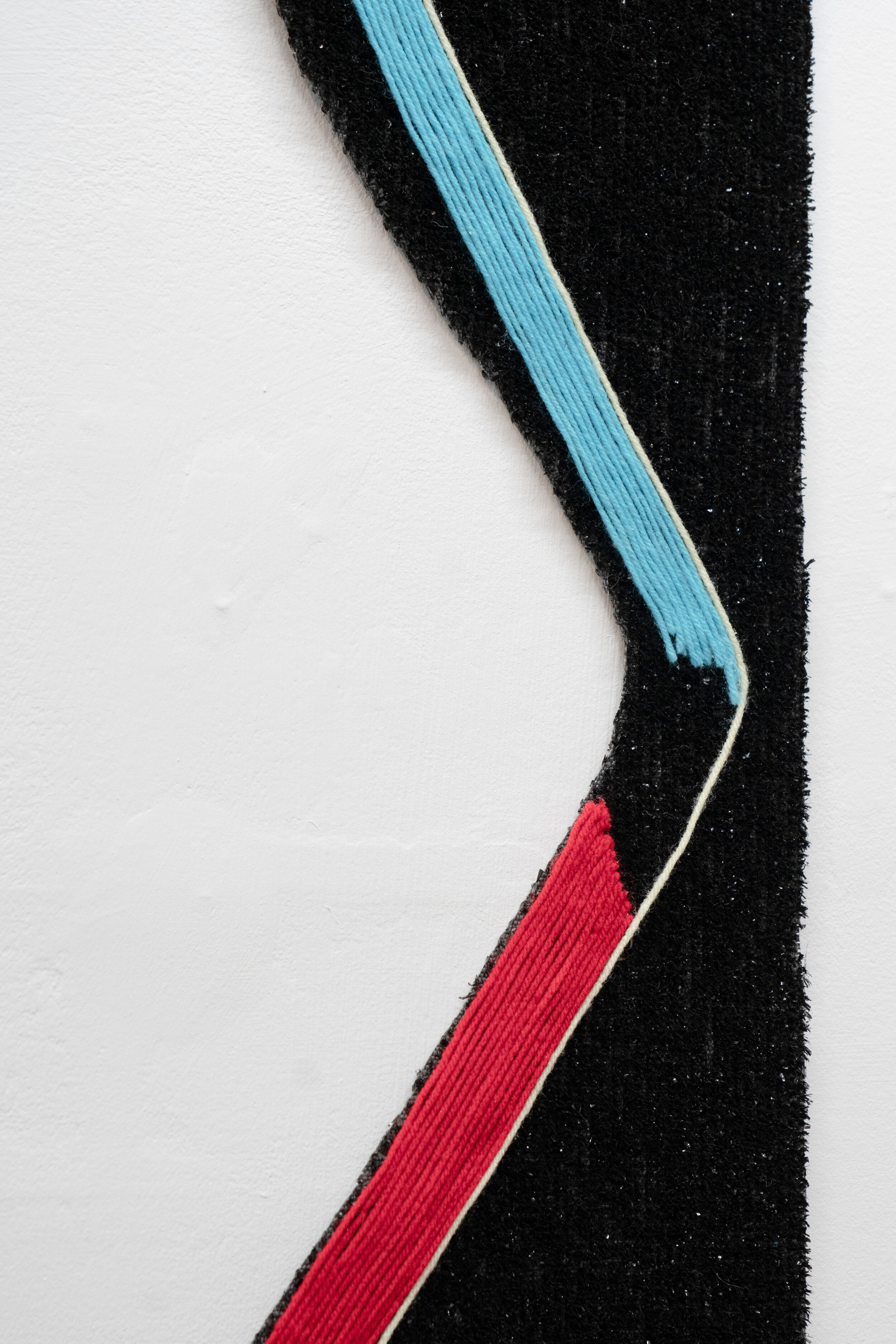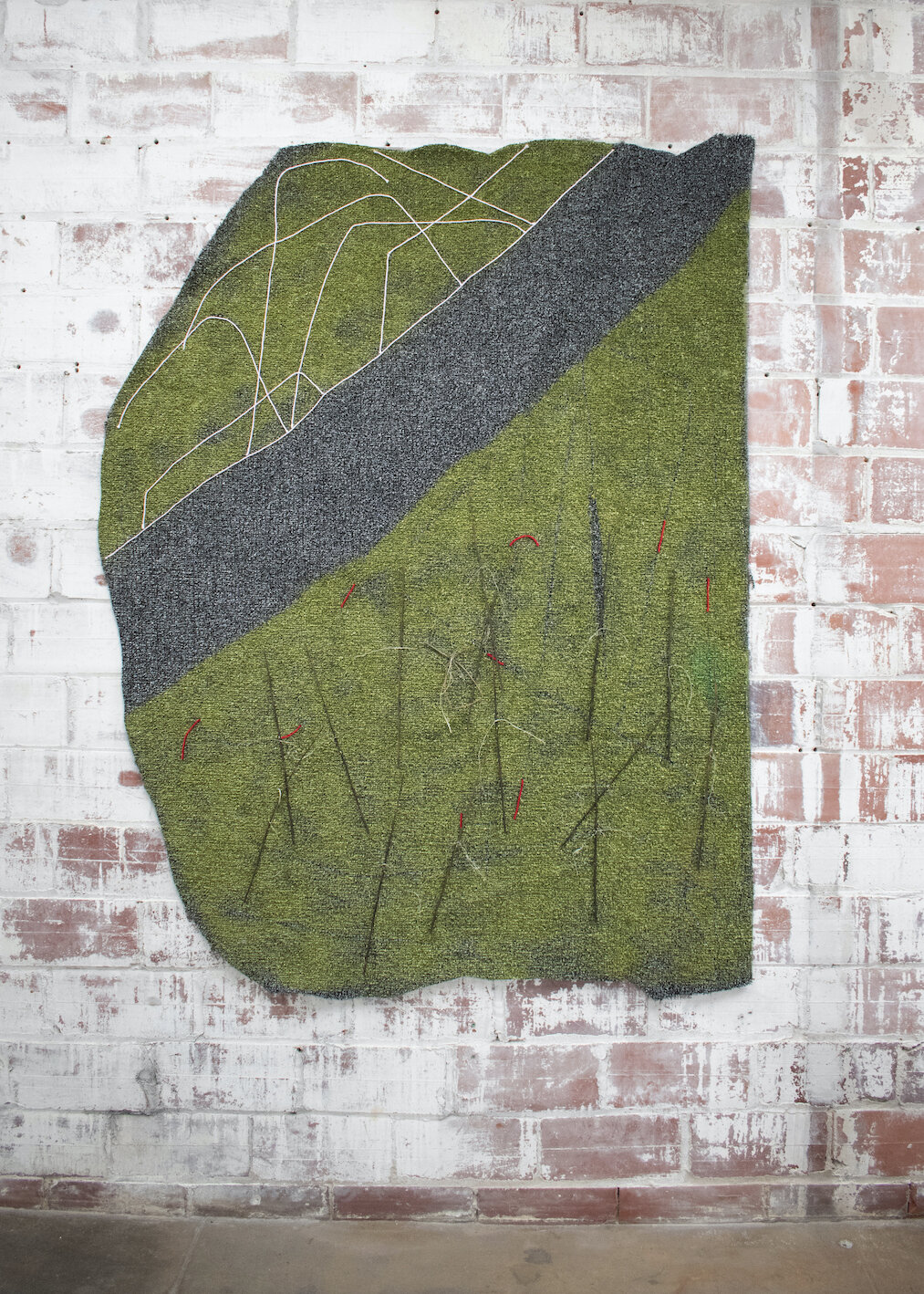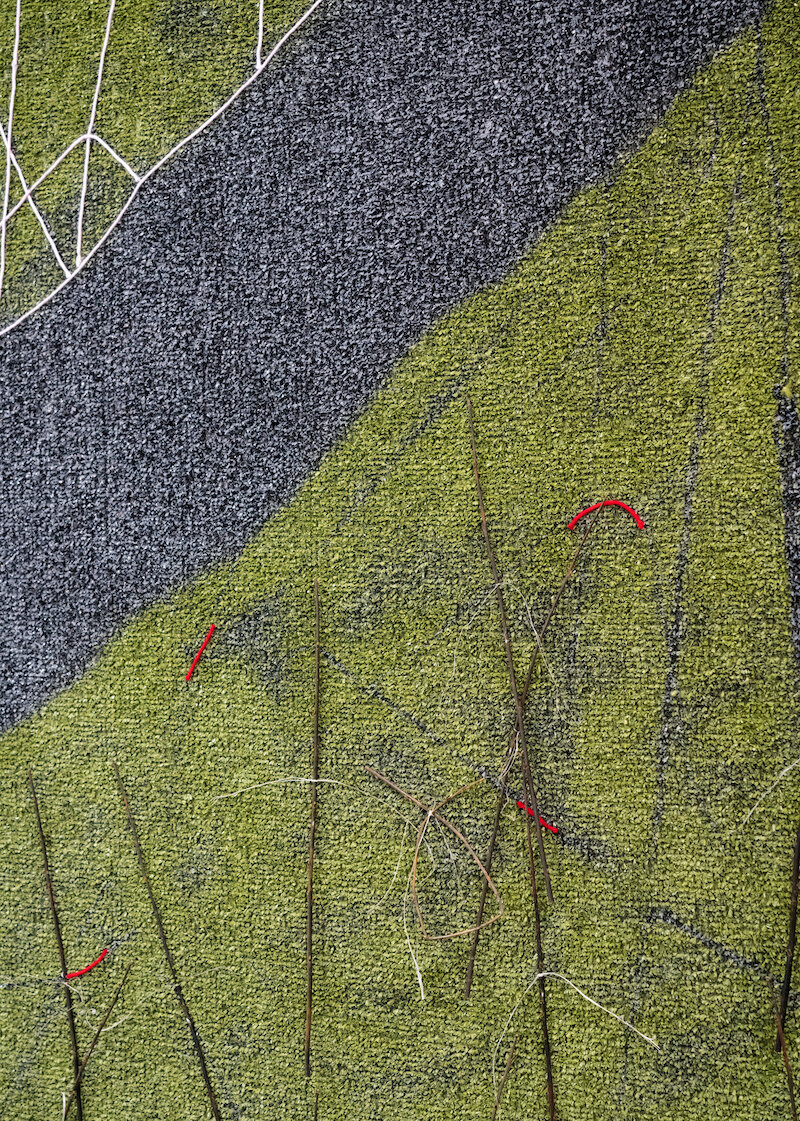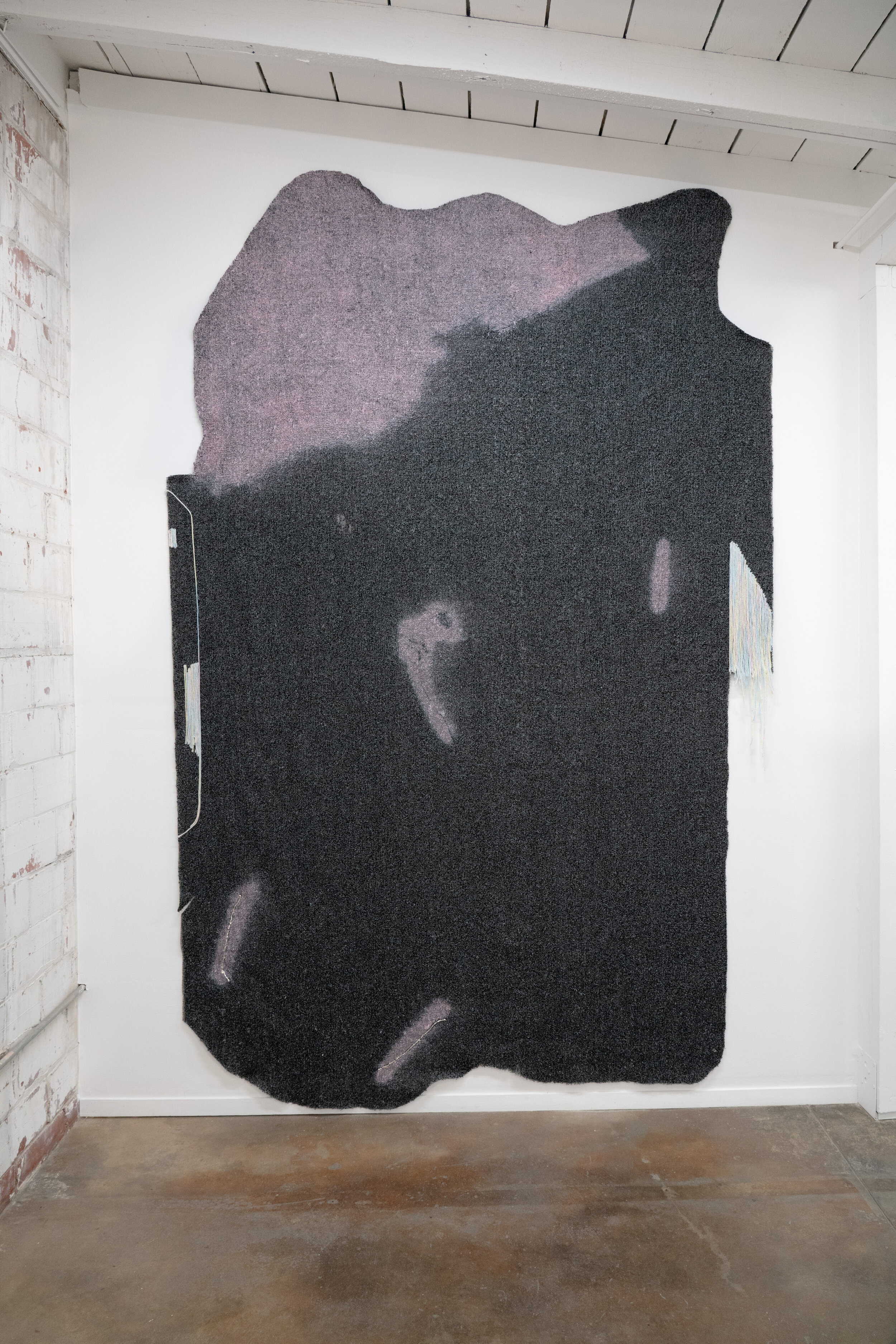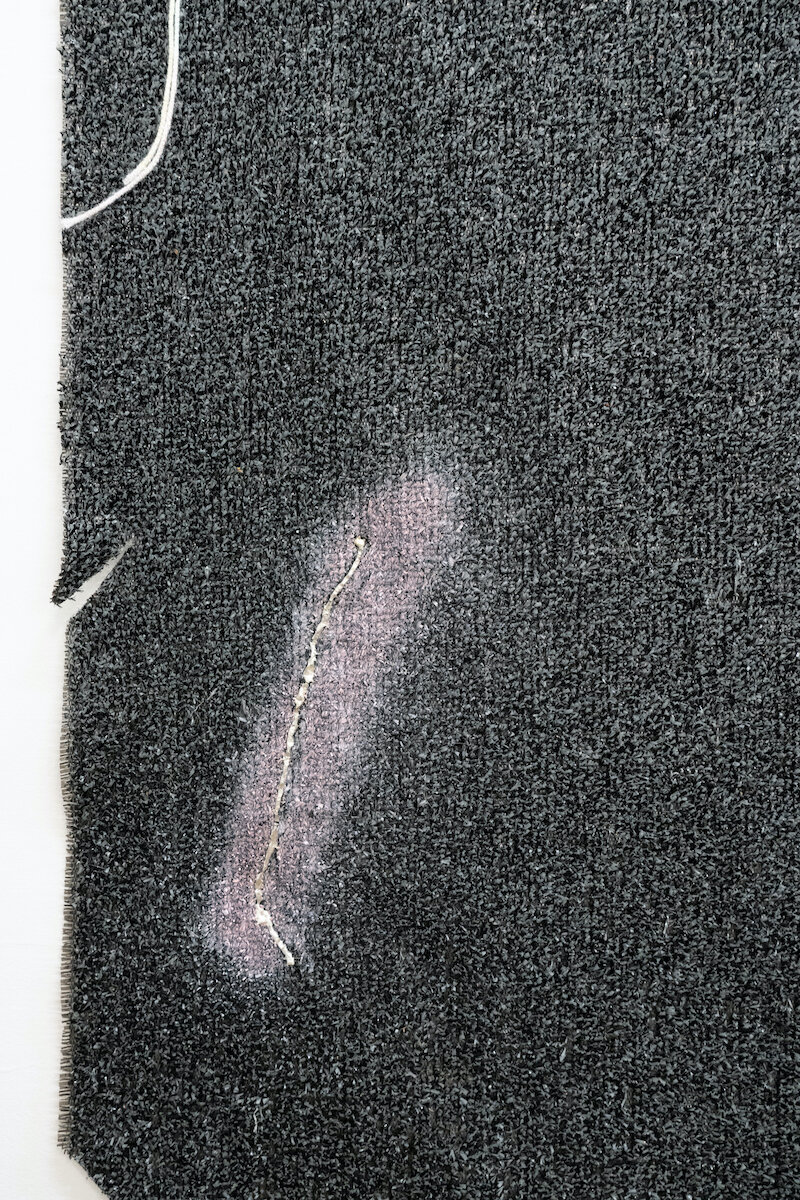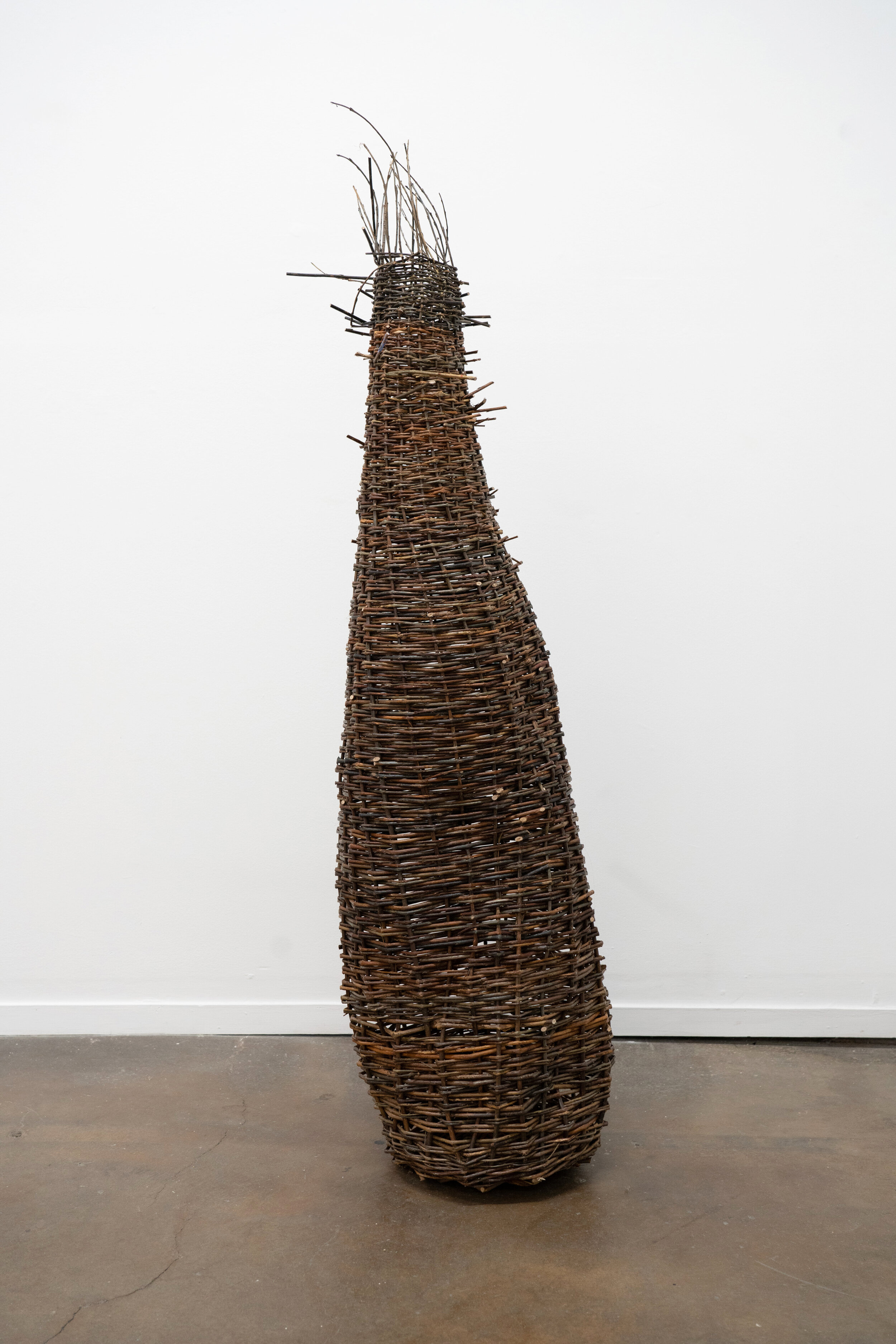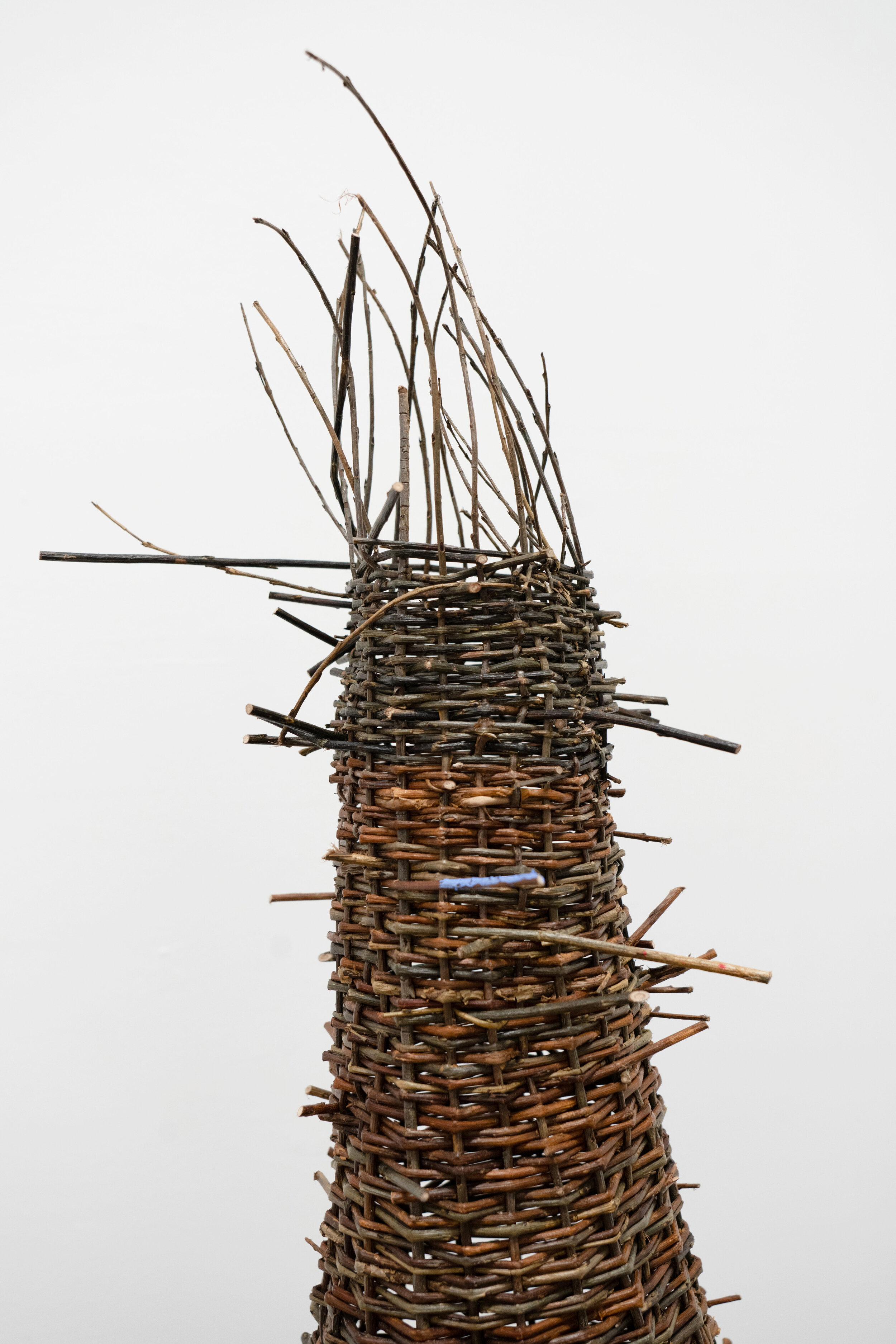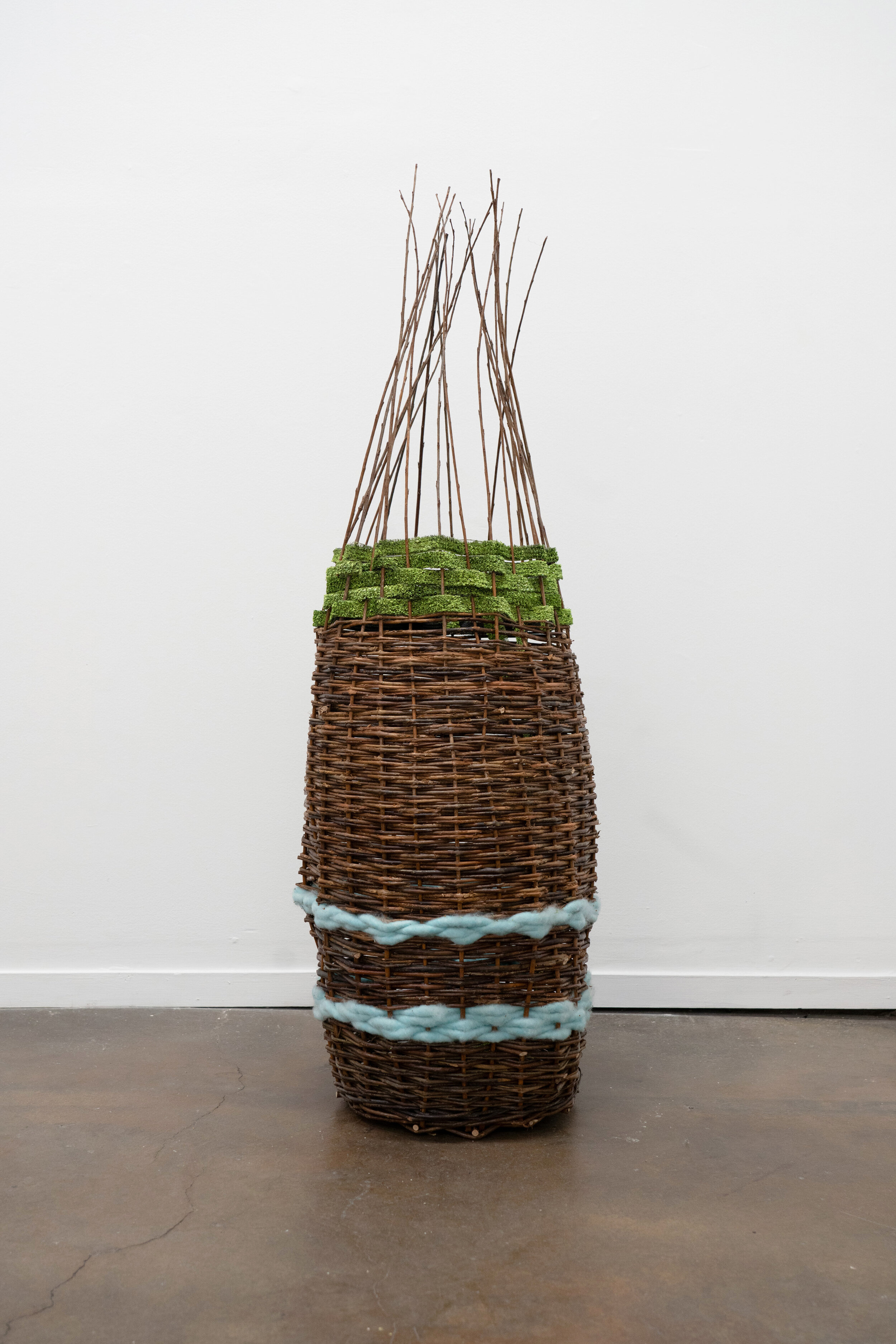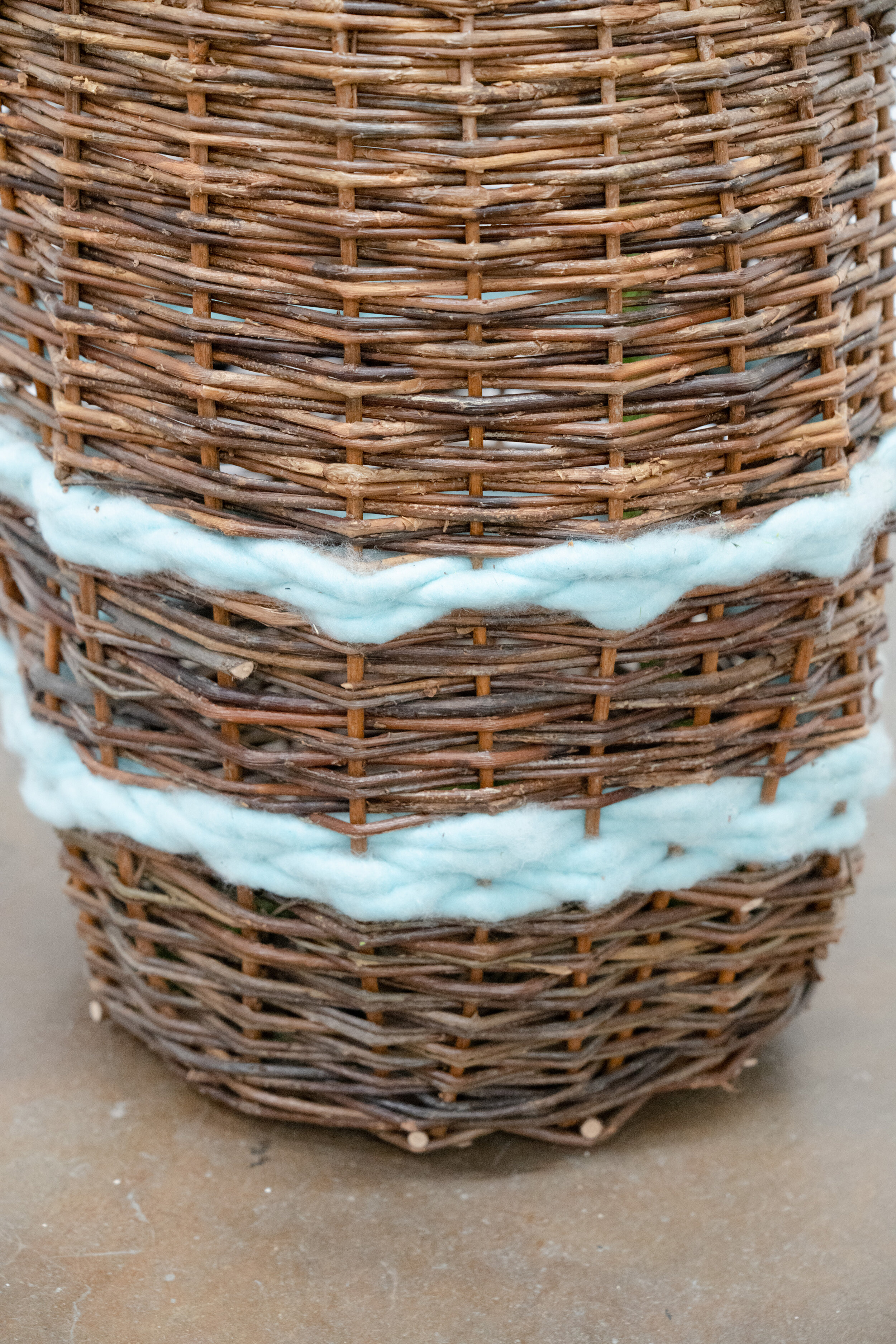Out West
Teresa Baker
October 18 - December 1, 2019
@
interface gallery
Oakland, California, US
Teresa Baker has made a practice of working with unconventional materials—using large swaths of felt, mesh and more recently, AstroTurf as a ground for works that explore color, texture and space. As she writes, “I find these materials have a bare quality to them that allow them to be transformed.” Linear, looping marks made with materials like yarn and string often suggest a kind of mapping of this ground. Roughly cut edges and beads of soldering take their place within a visceral set of relationships.
Baker’s sense of space is indelibly informed by her time spent growing up on the Northern Plains. She writes, “I always draw from memory of moments and physical spaces; hours spent on the Northern Plains landscape where I’m from, exploring, walking, looking, working—in a place much bigger than ourselves.”
Recently, she has begun incorporating more traditional materials that reference her Native American heritage—like buffalo hide, buckskin and willow, merging them with the synthetic materials that she has always used. All of these materials are taken out of rather specific contexts and embedded in a new terrain in relation to one another. As Baker writes, “This work is a long history of fragments, coming together to form a whole.”
Baker has also produced two large willow baskets, based on the “burden baskets” made and used by Hidatsa women. While her work often contains a sculptural quality, this is the artist’s first foray into freestanding sculpture.
A new poem by Jennifer Elise Foerster accompanies the exhibition.
The Waiting Room
where no one waits
opens at the edge of a field.
A face ticks its clouds across the painted walls.
There is no one here
to speak back—
no clock, no bird,
no tree’s throatless suspension—
all your metallic charms
bright on its branches—
sublingual lanterns.
You have raced against your ghost
into tunneling dark, stars—
droplets on sharpened grass.
You have peeled back the surface of the water—
fish in your blood
skimming the blade.
What do you see,
being rowed across,
weightless as you are?
A garden of stolen language
planted in a night that had
no story to tell.
Were you to leave it all behind.
A white trail of egrets
sewn along the spit.
Stemless blooms
deranged of color.
Do names
once they lose
their bodies
float?
Perhaps between the light
and its absence
is arrival. There is no other room.
You will forget everyone—
the names you have kept,
the names you have banished—
spent casks of wind.
There is nothing
to race against, nothing to wait for.
You trace the turquoise curve
for a window,
for that vast
humming field where you vanish.
- Jennifer Elise Foerster, The Waiting Room, 2019
-
Teresa Baker (Mandan/Hidatsa) received her BA in Visual Arts from Fordham University, New York in 2008, followed by her MFA from the California College of Arts in San Francisco, 2013. Baker received the Headlands Center for the Arts Tournesol Award in 2013. She has had exhibitions at the Art Museum of Southeast Texas and Gray Contemporary (Houston), Et Al., Kiria Koula, and YBCA, among others. In 2018, her visual essay, Sego Lily, was published by Open Space (SFMOMA).
Jennifer Elise Foerster is an alumna of the Institute of American Indian Arts (IAIA) and received her MFA from the Vermont College of the Fine Arts. She is a member of the Muscogee (Creek) Nation of Oklahoma. Jennifer is the author of Leaving Tulsa, (2013) and Bright Raft in the Afterweather (2018), both published by the University of Arizona Press.


